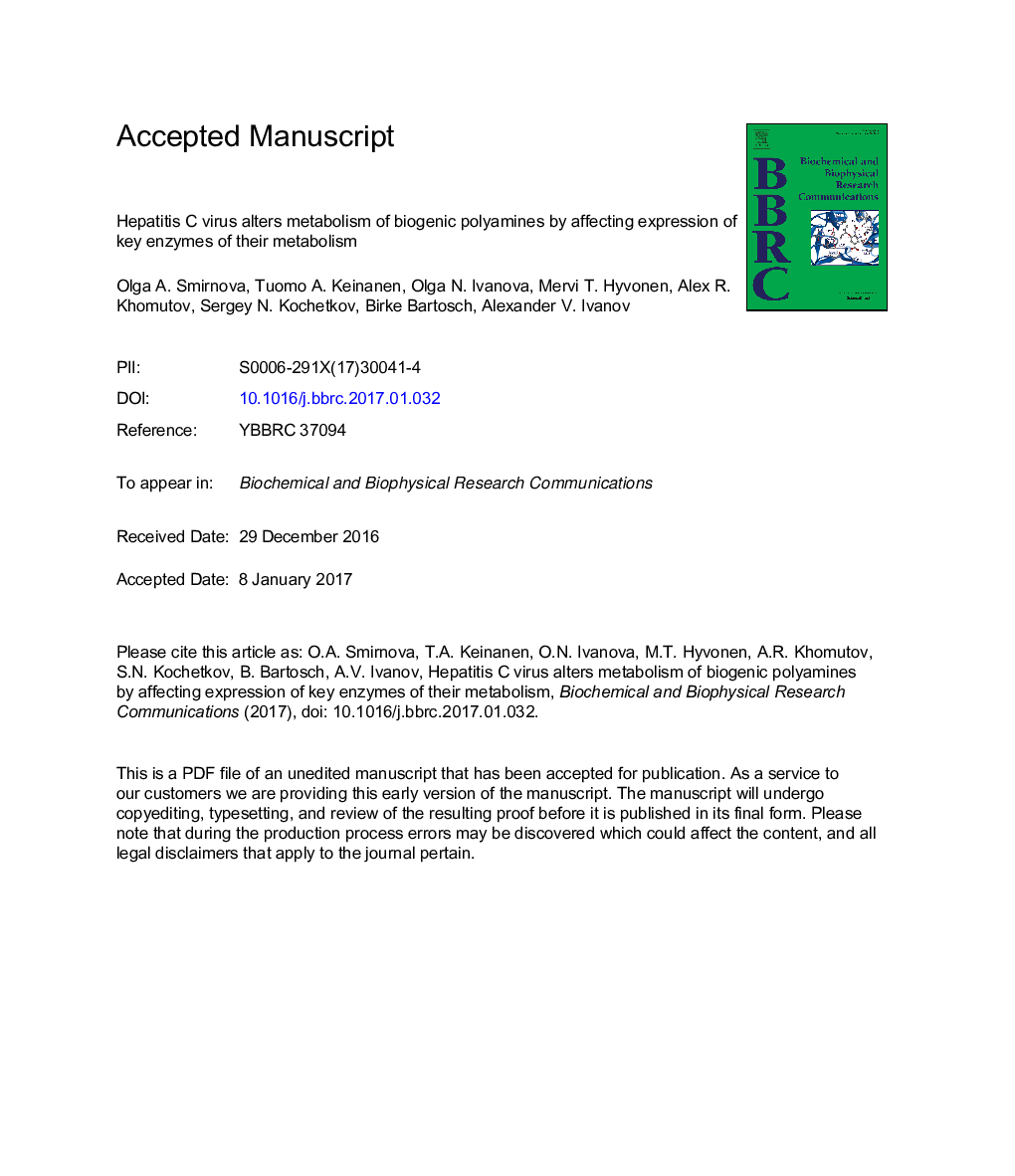| Article ID | Journal | Published Year | Pages | File Type |
|---|---|---|---|---|
| 5505542 | Biochemical and Biophysical Research Communications | 2017 | 24 Pages |
Abstract
Chronic infection with hepatitis C virus (HCV) induces liver fibrosis and cancer. In particular metabolic alterations and associated oxidative stress induced by the virus play a key role in disease progression. Albeit the pivotal role of biogenic polyamines spermine and spermidine in the regulation of liver metabolism and function and cellular control of redox homeostasis, their role in the viral life cycle has not been studied so far. Here we show that in cell lines expressing two viral proteins, capsid and the non-structural protein 5A, expression of the two key enzymes of polyamine biosynthesis and degradation, respectively, ornithine decarboxylase (ODC) and spermidine/spermine-N1-acetyl transferase (SSAT), increases transiently. In addition, both HCV core and NS5A induce sustained expression of spermine oxidase (SMO), an enzyme that catalyzes conversion of spermine into spermidine. Human hepatoma Huh7 cells harboring a full-length HCV replicon exhibited suppressed ODC and SSAT levels and elevated levels of SMO leading to decreased intracellular concentrations of spermine and spermidine. Thus, role of HCV-driven alterations of polyamine metabolism in virus replication and development of HCV-associated liver pathologies should be explored in future.
Related Topics
Life Sciences
Biochemistry, Genetics and Molecular Biology
Biochemistry
Authors
Olga A. Smirnova, Tuomo A. Keinanen, Olga N. Ivanova, Mervi T. Hyvonen, Alex R. Khomutov, Sergey N. Kochetkov, Birke Bartosch, Alexander V. Ivanov,
